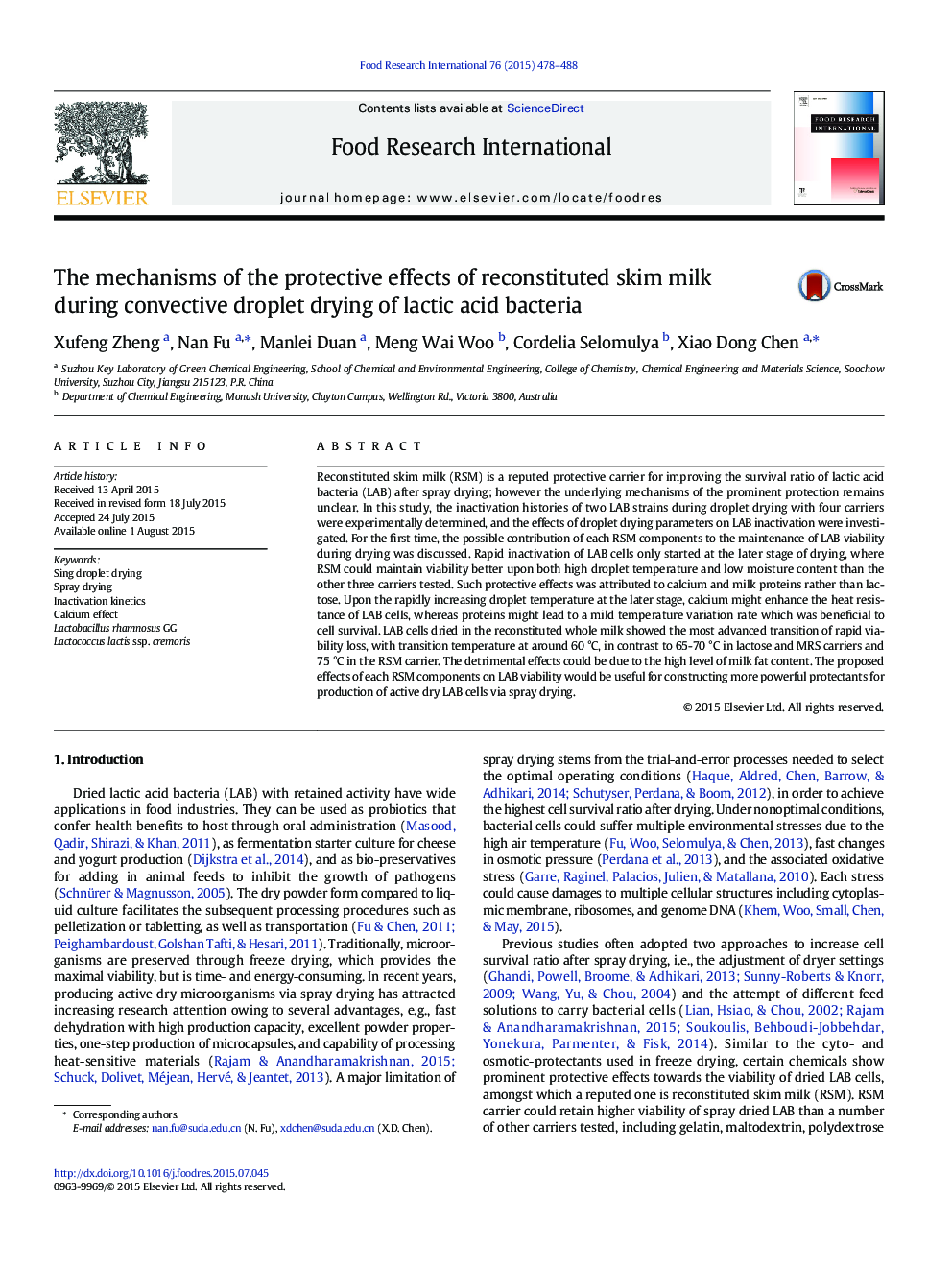| Article ID | Journal | Published Year | Pages | File Type |
|---|---|---|---|---|
| 6395154 | Food Research International | 2015 | 11 Pages |
â¢Correlation of cell inactivation and drying kinetics was studied in four carriersâ¢Rapid loss of LAB viability only occurred at the later stage of droplet dryingâ¢RSM protected LAB cells at high droplet temperature and low moisture content rangesâ¢The protective effect was attributed to Ca2 + and milk proteins rather than lactoseâ¢Whole milk appeared detrimental to cells with advanced transition to viability loss
Reconstituted skim milk (RSM) is a reputed protective carrier for improving the survival ratio of lactic acid bacteria (LAB) after spray drying; however the underlying mechanisms of the prominent protection remains unclear. In this study, the inactivation histories of two LAB strains during droplet drying with four carriers were experimentally determined, and the effects of droplet drying parameters on LAB inactivation were investigated. For the first time, the possible contribution of each RSM components to the maintenance of LAB viability during drying was discussed. Rapid inactivation of LAB cells only started at the later stage of drying, where RSM could maintain viability better upon both high droplet temperature and low moisture content than the other three carriers tested. Such protective effects was attributed to calcium and milk proteins rather than lactose. Upon the rapidly increasing droplet temperature at the later stage, calcium might enhance the heat resistance of LAB cells, whereas proteins might lead to a mild temperature variation rate which was beneficial to cell survival. LAB cells dried in the reconstituted whole milk showed the most advanced transition of rapid viability loss, with transition temperature at around 60 °C, in contrast to 65-70 °C in lactose and MRS carriers and 75 °C in the RSM carrier. The detrimental effects could be due to the high level of milk fat content. The proposed effects of each RSM components on LAB viability would be useful for constructing more powerful protectants for production of active dry LAB cells via spray drying.
